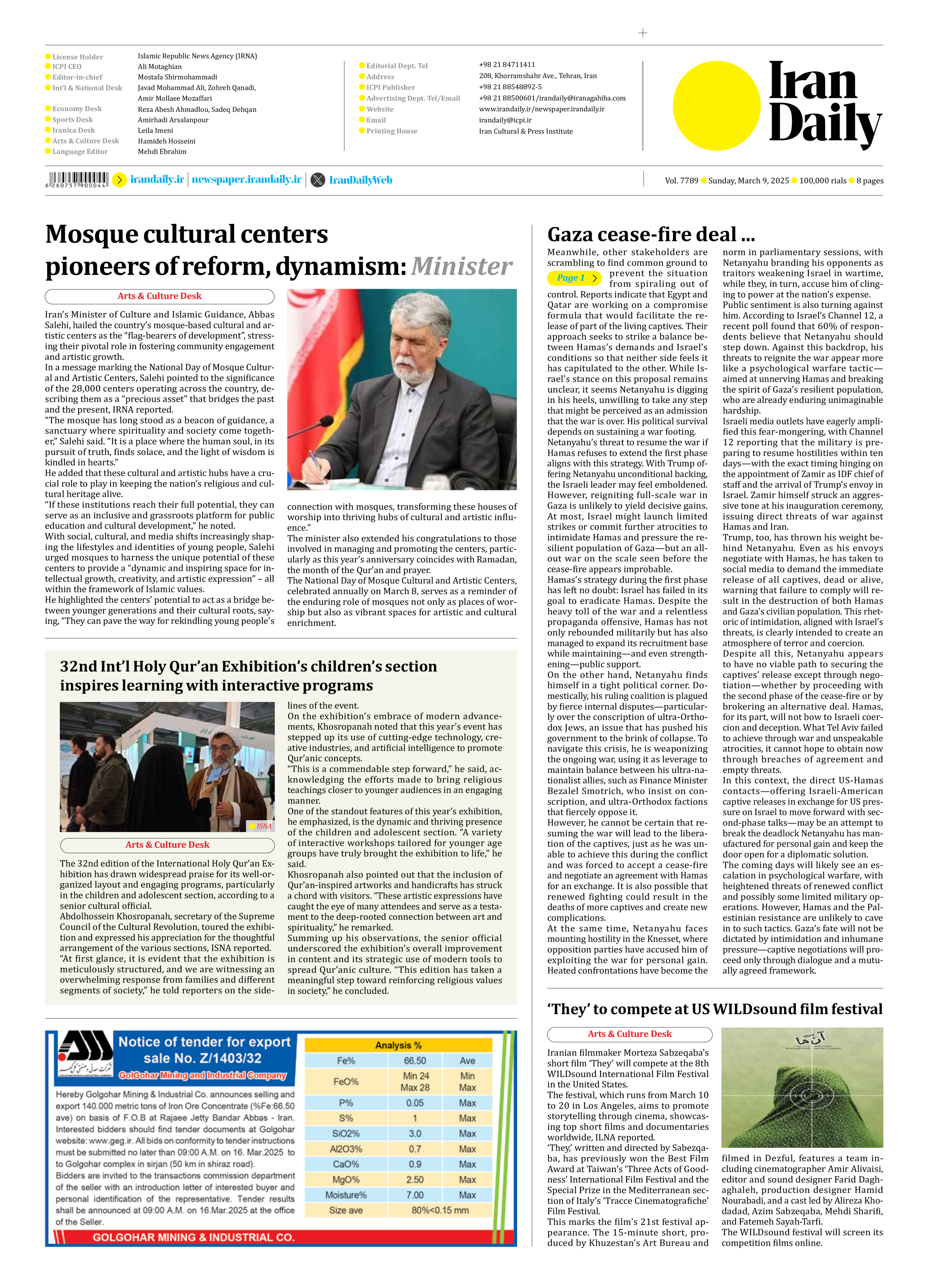
Gaza cease-fire deal ...
Page 1
Meanwhile, other stakeholders are scrambling to find common ground to prevent the situation from spiraling out of control. Reports indicate that Egypt and Qatar are working on a compromise formula that would facilitate the release of part of the living captives. Their approach seeks to strike a balance between Hamas’s demands and Israel’s conditions so that neither side feels it has capitulated to the other. While Israel’s stance on this proposal remains unclear, it seems Netanyahu is digging in his heels, unwilling to take any step that might be perceived as an admission that the war is over. His political survival depends on sustaining a war footing.
Netanyahu’s threat to resume the war if Hamas refuses to extend the first phase aligns with this strategy. With Trump offering Netanyahu unconditional backing, the Israeli leader may feel emboldened. However, reigniting full-scale war in Gaza is unlikely to yield decisive gains. At most, Israel might launch limited strikes or commit further atrocities to intimidate Hamas and pressure the resilient population of Gaza—but an all-out war on the scale seen before the cease-fire appears improbable.
Hamas’s strategy during the first phase has left no doubt: Israel has failed in its goal to eradicate Hamas. Despite the heavy toll of the war and a relentless propaganda offensive, Hamas has not only rebounded militarily but has also managed to expand its recruitment base while maintaining—and even strengthening—public support.
On the other hand, Netanyahu finds himself in a tight political corner. Domestically, his ruling coalition is plagued by fierce internal disputes—particularly over the conscription of ultra-Orthodox Jews, an issue that has pushed his government to the brink of collapse. To navigate this crisis, he is weaponizing the ongoing war, using it as leverage to maintain balance between his ultra-nationalist allies, such as Finance Minister Bezalel Smotrich, who insist on conscription, and ultra-Orthodox factions that fiercely oppose it.
However, he cannot be certain that resuming the war will lead to the liberation of the captives, just as he was unable to achieve this during the conflict and was forced to accept a cease-fire and negotiate an agreement with Hamas for an exchange. It is also possible that renewed fighting could result in the deaths of more captives and create new complications.
At the same time, Netanyahu faces mounting hostility in the Knesset, where opposition parties have accused him of exploiting the war for personal gain. Heated confrontations have become the norm in parliamentary sessions, with Netanyahu branding his opponents as traitors weakening Israel in wartime, while they, in turn, accuse him of clinging to power at the nation’s expense.
Public sentiment is also turning against him. According to Israel’s Channel 12, a recent poll found that 60% of respondents believe that Netanyahu should step down. Against this backdrop, his threats to reignite the war appear more like a psychological warfare tactic—aimed at unnerving Hamas and breaking the spirit of Gaza’s resilient population, who are already enduring unimaginable hardship.
Israeli media outlets have eagerly amplified this fear-mongering, with Channel 12 reporting that the military is preparing to resume hostilities within ten days—with the exact timing hinging on the appointment of Zamir as IDF chief of staff and the arrival of Trump’s envoy in Israel. Zamir himself struck an aggressive tone at his inauguration ceremony, issuing direct threats of war against Hamas and Iran.
Trump, too, has thrown his weight behind Netanyahu. Even as his envoys negotiate with Hamas, he has taken to social media to demand the immediate release of all captives, dead or alive, warning that failure to comply will result in the destruction of both Hamas and Gaza’s civilian population. This rhetoric of intimidation, aligned with Israel’s threats, is clearly intended to create an atmosphere of terror and coercion.
Despite all this, Netanyahu appears to have no viable path to securing the captives’ release except through negotiation—whether by proceeding with the second phase of the cease-fire or by brokering an alternative deal. Hamas, for its part, will not bow to Israeli coercion and deception. What Tel Aviv failed to achieve through war and unspeakable atrocities, it cannot hope to obtain now through breaches of agreement and empty threats.
In this context, the direct US-Hamas contacts—offering Israeli-American captive releases in exchange for US pressure on Israel to move forward with second-phase talks—may be an attempt to break the deadlock Netanyahu has manufactured for personal gain and keep the door open for a diplomatic solution.
The coming days will likely see an escalation in psychological warfare, with heightened threats of renewed conflict and possibly some limited military operations. However, Hamas and the Palestinian resistance are unlikely to cave in to such tactics. Gaza’s fate will not be dictated by intimidation and inhumane pressure—captive negotiations will proceed only through dialogue and a mutually agreed framework.







